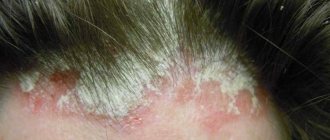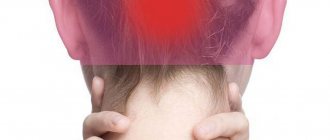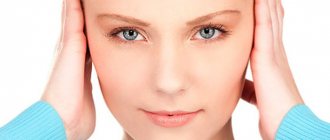Glaucoma:
Throbbing pain on the right side of the head can begin in those who have a disease such as glaucoma. In this case, a person feels an increase in intraocular pressure, during which the eyes hurt, the eyelids turn red, nausea, weakness appear, and vision deteriorates. The insidiousness of this disease is that at first it does not manifest itself in any way.
If throbbing pain in the head is present in the back of the head, then it may indicate some kind of infectious disease, or if there are tumors in the brain. But these diseases can be reliably stated when pulsation occurs regularly. If these are isolated cases, they occur in the following conditions:
- when a person drank coffee and abruptly gave it up. Ripple occurs because the vessels cannot quickly return to normal after an overstrained state;
- when smoking;
- during an incorrect position during sleep;
- after experiencing overvoltages of various types.
Such pain goes away when a person quits smoking, gives up coffee and is less nervous about various little things.
Local diseases
If it hurts just below the temple when pressed (the sensation is not located in the temple itself, but next to it), then most likely the cause is local diseases. These are meningitis, sinusitis, inflammation of the nasopharynx and sinuses, ARVI, and other infectious diseases. This is due to an increase in temperature and the accumulation of mucus in certain parts, which with its volume puts pressure on the tissues of the skull.
To treat such conditions, antiviral and immunomodulatory drugs should be used. These are “Kagocel”, “Sinupret”, “Arbidol” and others. An immunologist can prescribe a medicine that would be ideal for a particular patient and does not cause side effects.
If the temple on the right side hurts when pressed (at the same time there is nasal congestion, sore throat, swollen lymph nodes and other symptoms of ARVI and influenza), then the inflammatory process occurs on the right side of the nasopharynx, tonsils and sinuses. It is necessary to more actively use medicinal aerosols and sprays specifically for the treatment of the right nostril and the side of the throat. Does your temple on the left side hurt when you press? Accordingly, the inflammatory process is more active on the left.
Types of throbbing pain in the head in various diseases
If a person focuses on his sensations in the back of his head, understands how long the pulsation lasts and what its frequency is, he can himself determine the presence of a particular disease.
- If the pulsation begins in the morning and there is a feeling of heaviness in the head and an increased heart rate, this is a sign of pressure changes, often hypertension. In some cases, along with these signs, pain in the temples is observed.
- Regular pulsation in the temples of the head indicates the presence of VSD. Often dizziness and nausea are added to the pulsation.
- A slight throbbing pain in the back of the head and a feeling that the pain is radiating to the ear or jaw is the result of hypothermia or the onset of a cold or infection.
- Pulsation in the back of the head and temporal part, as well as in the temples, and this pain is accompanied by weakness throughout the body, perhaps blood vessels are pinched somewhere or a spasm has occurred.
- Symptoms of cervical migraine are sudden attacks of pulsation, while flashes appear in the eyes.
- With cervical osteochondrosis, a strong pulsation occurs in the back of the head, in addition, it becomes dark in the eyes and noise in the ears appears.
- Pain in the back of the head, which spreads to the right side of the head, in the temple area, indicates a strong jump in intracranial pressure, migraine or vasospasm.
Methods for diagnosing headaches
The Clinical Brain Institute has developed special individual diagnostic programs. They will help determine why your head and right eye hurt and how to prevent further progression of the disease. At the first examination, it is important for the doctor to know the nature and intensity of the headache, its frequency and time of occurrence. You should also report any additional symptoms that, in the patient's opinion, may not be related to the headache.
In our center you can undergo a full examination if you have a headache that radiates to your right eye. Several techniques may be needed to obtain a complete picture.
- X-ray – images of the cervical spine are informative in the diagnosis of displacements, osteochondrosis, and curvature of the spine. They can also identify head injuries.
- Examination by an ophthalmologist - includes various methods of testing vision, as well as determining intraocular pressure. If necessary, he prescribes additional tests.
- Electroencephalography is a technique that allows you to assess the degree of brain function and the speed of transmission of nerve impulses. The test results can show indirect signs of tumors, circulatory disorders, and hematomas.
- Ultrasound of cerebral vessels (Dopplerography) is an analysis that is performed if atherosclerosis, vascular spasms, or blockage of their lumen in certain areas is suspected. Their early diagnosis is the main prevention of ischemic stroke.
- MRI and CT of the brain are the most informative and accurate studies that are prescribed for suspected tumors, areas of ischemia and necrosis, and hemorrhage. CT also helps to determine the condition of the blood vessels in the brain and promptly identify changes in their structure.
Timely diagnosis is the key to successful treatment. It is important to understand not only the general clinical picture, but also to determine what disorders laid the foundation for the disease. Doctors will prescribe an individual set of tests that will give a complete understanding of the patient’s condition.
There is a throbbing pain in the head: when should you see a doctor?
There are situations in which a visit to the doctor is inevitable, and the sooner the better for a person to dull the pain at an early stage. So, you should visit a doctor if:
- The throbbing pain does not go away for several hours.
- Intense pain does not stop for several days and brings significant discomfort
- Pain in the back of the head begins in the early morning.
- If the pressure increases during pulsation, you must definitely call an ambulance to avoid a hypertensive crisis.
Arteritis of the temporal region
Arteritis is an inflammatory disease of the arteries.
A rather rare disease in which a small lump forms on the temple, hurts when pressed and pulsates. It occurs most often in people over fifty years of age. The appearance of arteritis in young people is possible in isolated cases only in the presence of a genetic predisposition.
Arteritis is treated by a neurologist, surgeon, and therapist. At the same time, the patient may suffer from migraines, a feeling of fluid accumulation in the brain, and surges in blood pressure.
Treatment
Before starting treatment, you must visit a neurologist, ophthalmologist and therapist. In some cases, you need to contact an infectious disease specialist. Since all doctors unanimously insist that headaches should not be tolerated under any circumstances, you need to take one of the following medications:
- Citramon;
- Farmadol;
- No-shpa;
- Aspirin.
Even if a strong pulsation is felt, the dosage of the above medications cannot be exceeded, since the body will not receive any benefit. After taking the tablet, you need to lie down in silence, because any physical activity leads to a significant increase in pain.
After the doctor has found out the cause of the throbbing pain in the left side of the head, right or back of the head, the patient, in addition to treatment, needs to carry out the following procedures to normalize the body’s condition:
- Perform a warming massage in order to warm up the blood vessels and improve the condition of osteochondrosis and neuralgia. In addition to massage, manual therapy will help improve your well-being.
- A soft and gentle massage will alleviate the condition of intracranial hypertension.
- Japanese acupressure will improve your well-being for various types of pain.
- Regularly measuring blood pressure and bringing it back to normal in a timely manner will help eliminate throbbing pain.
- Physiotherapy will be appropriate for osteochondrosis, neuralgia, increased intracranial pressure and various vascular changes.
- Doctors prescribe physical therapy for all types of throbbing pain.
- Surgery is inevitable for tumors and other serious diseases.
As you can see, throbbing pain in the head is a symptom of many diseases. Therefore, you must definitely consult with a specialist or call an ambulance, because home methods can only get rid of mild pain.
What is intracranial pressure?
This is the pressure inside the cranial cavity. The brain is surrounded by cerebrospinal fluid, a fluid that is necessary to nourish nerve tissue. It is constantly produced and flows from the skull. Due to this process, optimal pressure inside the skull is maintained. Normally it is 10-15 mmHg. Art.
Intracranial pressure is the force with which the brain presses on the walls of the skull
We are talking about high intracranial pressure when the readings exceed 25 mmHg. Art. The critical value is 35 mmHg. Art. and more. The patient is diagnosed with intracranial hypertension or liquor-hypertensive syndrome.
Shpidonov Gennady Stanislavovich
Neurologist
Rostov State Medical University (neurology)
10 years of experience
Pathology never occurs independently; it appears for a number of reasons - both congenital and acquired. Slight fluctuations in the direction of increasing intracranial pressure (ICP) are possible when tilting the head, physical activity, or sneezing. But high rates are a consequence of more severe conditions:
- traumatic brain injury (TBI), back injury with spinal cord damage;
- brain tumors, cysts, abscesses;
- hydrocephalus;
- aneurysm or vascular thrombosis;
- infectious diseases: encephalitis, meningitis;
- swelling of the brain after a stroke;
- encephalopathy;
- intracerebral hemorrhage;
- taking potent drugs that can disrupt the production and circulation of cerebrospinal fluid: hormonal agents, antibiotics and others;
- intoxication with chemicals.
At risk are hypertensive patients, people with metabolic disorders, obesity, vascular pathologies, patients who have had a stroke, or surgery on the brain or spinal cord.
Note! Patients with hypertension do not necessarily develop intracranial hypertension. Sometimes even hypotensive people suffer from high ICP.
The causes of high ICP in adults and children are similar. But often the appearance of intracranial hypertension in a child is facilitated by congenital developmental anomalies (hydrocephalus or microcephaly), birth injuries, oxygen starvation, and asphyxia. Premature babies are at risk.
The pressure inside the skull increases for two reasons: cerebrospinal fluid is produced in excess or it flows worse
Depending on the cause of its occurrence, the syndrome can occur in acute or chronic form. The first one is caused by injuries and neuroinfections. The chronic form develops gradually as brain tumors grow and cerebrovascular accidents occur.
If intracranial pressure increases, it is necessary to obtain qualified help from a neurologist. It is important not only to detect the underlying cause and eliminate it, but also to restore impaired cerebrospinal fluid dynamics. If this is not done, the symptoms of the disease will persist even after treatment of inflammation, head or back injury, or tumor removal.








